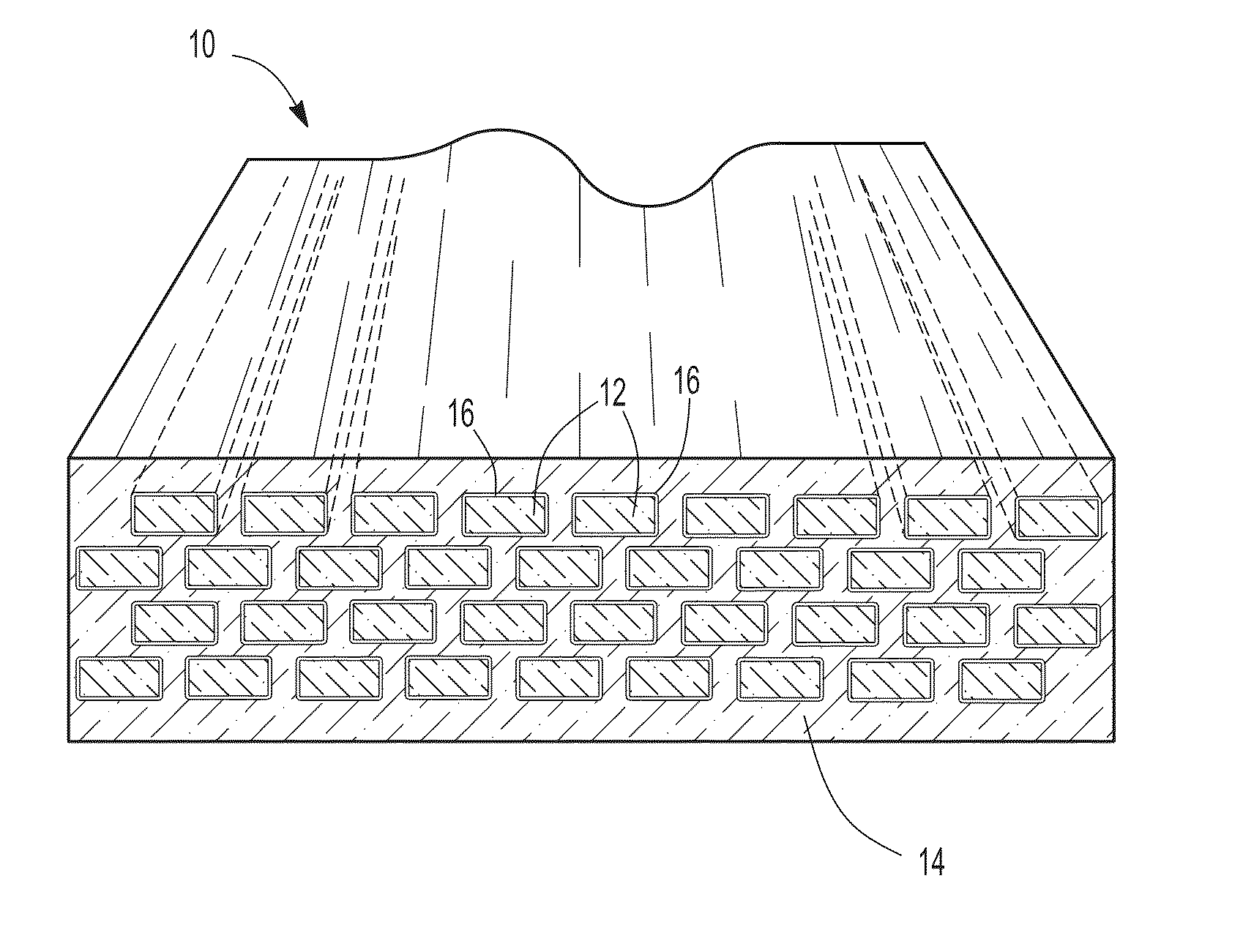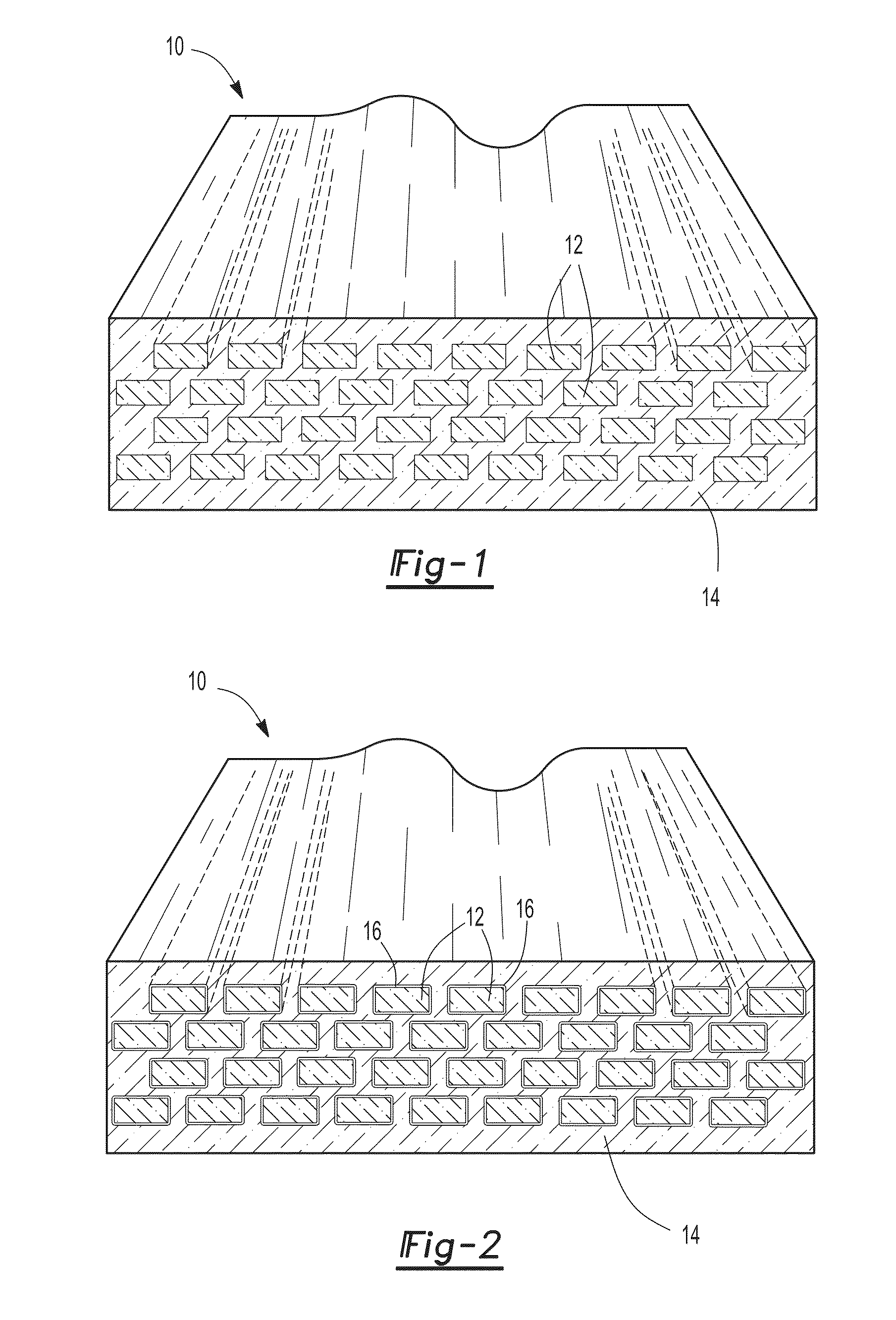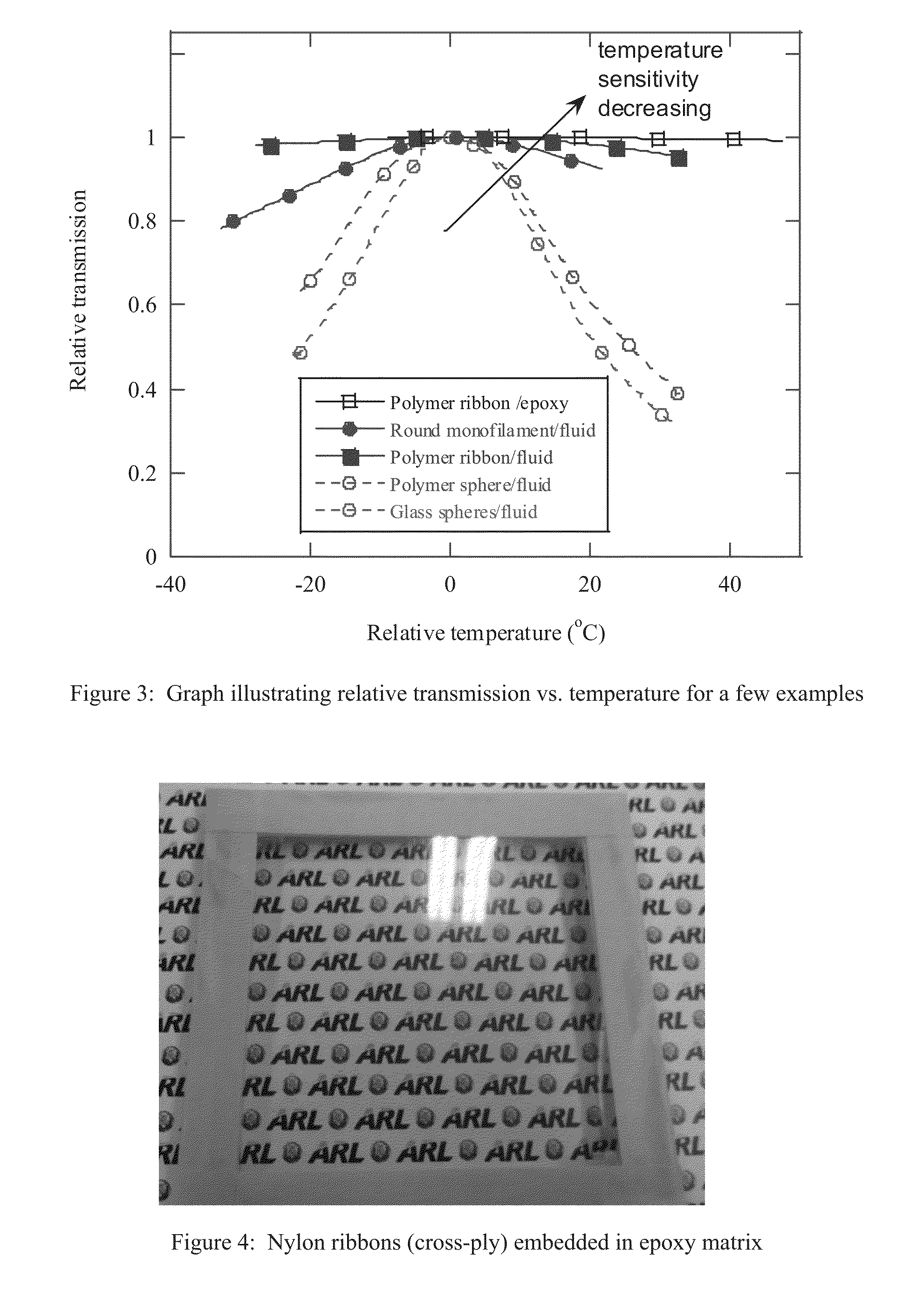Thermally stable transparent composite materials
- Summary
- Abstract
- Description
- Claims
- Application Information
AI Technical Summary
Benefits of technology
Problems solved by technology
Method used
Image
Examples
Embodiment Construction
[0024]With reference first to FIG. 1, an example of a composite material 10 according to the present invention is shown. The composite material 10 includes both a reinforcement constituent 12 which is encased within a matrix constituent 14. Preferably, both the reinforcement constituent 12 as well as the matrix constituent 14 are made of a polymer although, alternatively, ceramics, glass, or even an open-cell foam may be used. Suggested matrix polymeric materials include, but are not limited to, epoxies, polyesters such as polymethyl methacrylate (PMMA) and polycarbonate (PC), and polyamides or nylons.
[0025]The reinforcement fibers 12 are illustrated in FIG. 1 as aligned with each other in a set direction. However, such alignment of the reinforcement constituent 12 is not required. Instead, the reinforcement constituent 12 may extend, if desired, in random directions or be woven into a 2- or 3-dimensional fabric.
[0026]Both the reinforcement constituent 12 as well as the matrix const...
PUM
| Property | Measurement | Unit |
|---|---|---|
| Length | aaaaa | aaaaa |
| Length | aaaaa | aaaaa |
| Length | aaaaa | aaaaa |
Abstract
Description
Claims
Application Information
 Login to View More
Login to View More - R&D
- Intellectual Property
- Life Sciences
- Materials
- Tech Scout
- Unparalleled Data Quality
- Higher Quality Content
- 60% Fewer Hallucinations
Browse by: Latest US Patents, China's latest patents, Technical Efficacy Thesaurus, Application Domain, Technology Topic, Popular Technical Reports.
© 2025 PatSnap. All rights reserved.Legal|Privacy policy|Modern Slavery Act Transparency Statement|Sitemap|About US| Contact US: help@patsnap.com



